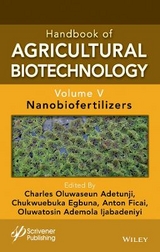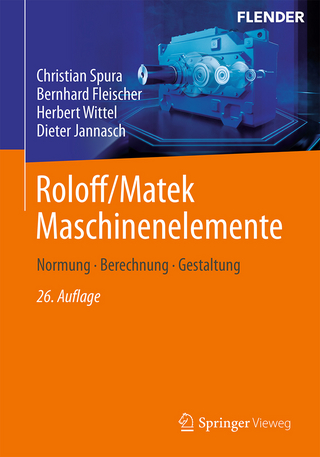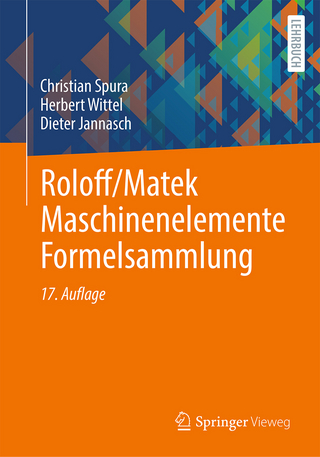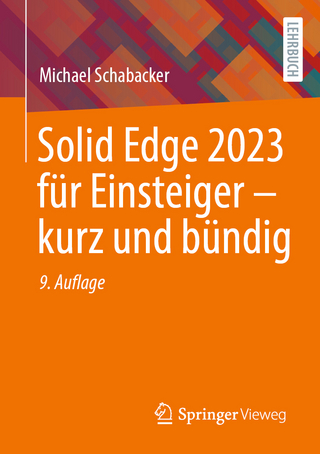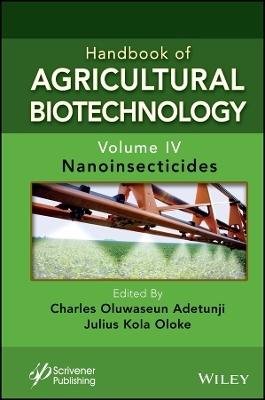
Handbook of Agricultural Biotechnology, Volume 4
Wiley-Scrivener (Verlag)
978-1-119-83617-9 (ISBN)
- Titel erscheint in neuer Auflage
- Artikel merken
The chapters of volume IV of this set, focus on a wide range of related topics. They chronicle many traditional repellent plants that could be used in ethnobotanical studies and provides valuable insight into the development of new natural products. It outlines the standardization and numerous investigations used to affirm the level of repellent compounds from various plants. Furthermore, it details the safety, efficacy, and facts about plant-based repellent testing, and reviews new developments in the field.
The book also explores the sustainable techniques involved in the structural elucidation and characterization of active constituents found in nanobioinsecticides, and gives relevant information on the use of essential oils, derived from plants, in the preparation of nanobioinsecticides.
Audience
The book is a useful resource for a diverse audience, including industrialists, food industry professionals, agriculturists, agricultural microbiologists, plant pathologists, botanists, microbiologists, biotechnologists, nanotechnologists, microbial biotechnologists, farmers, policymakers, and extension workers.
Charles Oluwaseun Adetunji, PhD, is a professor in the Department of Microbiology at the Edo University Iyamho, in Edo State, Nigeria. Currently, he is the Director of Intellectual Properties and Technology Transfer and Chairman of the Committee on Research Grants at EUI. He has won several scientific awards and grants from renowned academic bodies such as the Council of Scientific and Industrial Research (CSIR) India. He has published more than 600 papers in peer-reviewed national and international journals as well as more than 50 books, 340 book chapters, and many scientific patents. Julius Kola Oloke, PhD, is a Professor and Vice Chancellor in the Department of Pure and Applied Biology at the Ladoke Akintola University of Technology, Ogbomoso, Oyo State, Nigeria. He has a PhD in microbiology from Obafemi Awolowo University in 1989. Professor Oloke was conferred with the National Productivity Order of Merit Award by the Federal Government of Nigeria in August 2012, for his work on formulating an immune modulating agent known as Trinity Immuno-booster (Trino IB) which has been used in many countries.
Preface xvii
1 The Contribution of Ethnobotany to the Discovery of New Plant-Based Repellents 1
Edokpolor Osazee Ohanmu, Saheed Ibrahim Musa, Gloria Omorowa Omoregie, Anagwonye Uju, Etinfoh Hope, Ebiminor Gift Taramapreye, Alexis Ojeide and Beckley Ikhajiagbe
1.1 Introduction 2
1.2 Ethnobotany in the Discovery of New Plant-Based Repellents 2
1.3 Plant-Based Repellent 4
2 Nanobioinsecticide Derived from Essential Oils of Cymbopogon nardus 9
R. Vijayalaskshmi, D. Thilagavathi and T. Vennilavan
2.1 Introduction 9
2.2 Materials and Methods 11
2.3 Root 16
2.4 Discussion 17
2.5 Conclusion 20
3 Nanobioinsecticides Derived from Neem-Based Preparations 27
Ojo, S.K.S., Ojo, A.M., Ayo, I.O., Oluwole, B.R. and Otugboyega, J.O.
3.1 Introduction 28
3.2 Conventional Farming and its Challenges 30
3.3 Insects 34
3.4 Pesticides 37
3.5 Nanotechnology 40
3.6 Biomaterials 42
3.7 Description of Neem 47
3.8 Farm Level Neem Bioinsecticide Preparation 52
3.9 Effects of Neem Compounds and Its Composites on Insects 52
3.10 Neem-Based Preparations 54
3.11 Conclusion and Future Perspectives 56
4 Nanoinsecticides Derived from Poaceae Family 69
Ruth Ebunoluwa Bodunrinde and Charles Oluwaseun Adetunji
4.1 Introduction 69
4.2 Nanobioinsecticides Derived from Poaceae 70
4.3 Some Examples of Essential Oils Applied in Different Studies 71
4.4 Effectiveness/Efficacy of Essential Oils from Several Plants 72
4.5 Mechanism of Action of Essential Oils 72
5 Nanoinsecticides Derived from Pennyroyal-Containing Compounds 77
Ruth Ebunoluwa Bodunrinde and Charles Oluwaseun Adetunji
5.1 Introduction 77
5.2 Nanobioinsecticides Derived from Pennyroyal 78
5.3 Effectiveness/Efficacy of Essential Oils from Several Plants 78
5.4 Mechanism of Action of Essential Oils 79
5.5 Conclusion 80
6 Nanobioinsecticide Derived from Thyme Oil 83
Ruth Ebunoluwa Bodunrinde and Charles Oluwaseun Adetunji
6.1 Introduction 83
6.2 Effectiveness/Efficacy of Oils from Several Plants 85
6.3 Mechanism of Action of Essential Oils 86
6.4 Conclusion 86
References 86
7 Nanobioinsecticides from Geraniol-Containing Compounds 91
Ruth Ebunoluwa Bodunrinde, Nyejirime Young Wike, Charles Oluwaseun Adetunji and Olugbemi T. Olaniyan
7.1 Introduction 91
7.2 General Overview 94
7.3 Nanobioinsecticides Derived from Geraniol 94
7.4 Effectiveness/Efficacy of Essential Oils from Several Plants 95
8 Repellant Testing Methodology for Nanobioinsecticide 101
Babatunde Oluwafemi Adetuyi, Peace Abiodun Olajide, Oluwakemi Semiloore Omowumi and Charles Oluwaseun Adetunji
8.1 Introduction 102
8.2 The Antifeedant Management, Resources, and Reserve Capabilities of Nanotechnology-Based Antifeedant Delivery Systems for Insect Pest Control 105
8.3 Delivery System for Nanoparticle Antifeedant Formulation 110
8.4 Preventive Maintenance Dose (PMD) from Lemon Eucalyptus (Corymbia citriodora) Extract 113
8.5 Conclusion 119
8.6 The Way Forward 120
9 Nanobioinsecticide and Nanoemulsions: Recent Advances 129
Babatunde Oluwafei Adetuyi, Grace Odine, Peace Olajide Abiodun, Oluwakemi Semilore Omowumi and Charles Oluwaseun Adetunji
9.1 Introduction 130
9.2 Insecticide 130
9.3 Bioinsecticide 132
9.4 Problems with Bioinsecticide 134
9.5 Mechanism of Action of Bioinsecticide 135
9.6 Nanotechnology 135
9.7 Nanoemulsion 139
9.8 Monomolecular Films 141
9.9 Multimolecular Films 142
9.10 Solid Particulate Films 142
9.11 Method of Nanoemulsion 142
9.12 Characterization of Nanoemulsion 145
9.13 Application of Nanoemulsion 146
9.14 Recent Advances in Nanobioinsectides and Nanoemulsion 148
9.15 Future Perspectives 151
9.16 Summary and Conclusion 152
10 Roles of Improved Formulations and Fixatives in the Development of Nanobioinsecticide 165
Babatunde Oluwafemi Adetuyi, Peace Abiodun Olajide and Charles Oluwaseun Adetunji
10.1 Introduction 166
10.2 Biopesticides in Organic Farming 167
10.3 Natural Pesticide Mechanisms 169
10.4 Antifeedants 175
10.5 Citronella 183
10.6 Neem 184
10.7 Naturally Occurring Oils and Emulsions 184
10.8 Fragrant Oils 185
10.9 Considerations for Repellent Testing Methodology 189
10.10 Several Misconceptions Regarding Natural or Plant-Based Repellents 189
10.11 Progress in Plant-Based Repellents that is Promising 191
10.12 Botanical Pesticide Formulations Nanotechnology Use 192
10.13 Conclusion 193
11 Plant-Based Repellent Evaluation and Development 205
Edokpolor Osazee Ohanmu, Barka Peter Mshelmbula, Francis Aibuedefe Igiebor, Gloria Omorowa Omoregie, Precious Oselumese Agbi, Nathan Benjamin Iredia, Peace Achioya Isime, Oghenefegor Edheba and Beckley Ikhajiagbe
11.1 Introduction 206
11.2 Plant-Based Repellents 208
11.3 Mechanism of Action 210
11.4 Development in Plant-Based Repellents 211
11.5 Conclusion 217
12 Techniques Involved in the Structural Elucidation and Characterization of Active Constituents That Could Serve as Repellent Products Containing Plant-Based Ingredients as Nanobioinsecticide 223
Babatunde Oluwafemi Adetuyi, Peace Abiodun Olajide and Charles Oluwaseun Adetunji
12.1 Introduction 224
12.2 Farming's Use of Nano-Agrochemicals 227
12.3 Employing Natural Insecticides to Eradicate Serious Insects from Vegetable Crops 229
12.4 Effectiveness of Natural Pesticides in Practical Situations 236
12.5 Sustainability in Action: Natural Insecticidesfor Vegetable Crop Production 238
12.6 Conclusions 241
13 The Influence of Nanoinsecticides on the Social Economy and Its Bio-Economy Perspectives in Attaining Sustainable Development Goals 257
Abere Benjamin Olusola and Charles Oluwaseun Adetunji
13.1 Introduction 258
13.2 Nanotechnology as a Potential Source of Modern Pesticides 261
13.3 Agriculture and Toxicology of Insecticides 261
13.4 Nanostructured Alumina: A Novel Pesticide Powder Developed Through Nanotechnology 262
13.5 Pesticides Made of Nanoparticles 263
13.6 Review of the Literature 264
13.7 The Impact of Nanoinsecticides on the Development of Sustainable Development Goals 268
13.8 Conclusion 271
14 Procedure Involved in the Evaluation of Several Repellent Compounds Used for the Fabrication of Nanobioinsecticide 277
Babatunde Oluwafemi Adetuyi, Edward Kwame Opata, Peace Abiodun Olajide and Charles Oluwaseun Adetunji
14.1 Introduction 278
14.2 Insecticide Nanoparticles in a Variety of Forms 280
14.3 Resources for Producing Nanoemulsions 283
14.4 Nanosuspensions Production 286
14.5 Nanocapsules 288
14.6 Nanoparticles 292
14.7 Classification of Nanoparticles 292
14.8 Silver Nanoparticle Production 293
14.9 Nano-Sized Silica Particles 295
14.10 Making Silica Nanoparticles: Techniques 296
14.11 Pest Control: The Role of Silica Nanoparticles 296
14.12 Conclusion 296
15 Safety, Efficacy, and Facts on Testing of Plant-Based Repellants and Effectiveness of Nanobioinsecticides 307
Babatunde Oluwafemi Adetuyi, Oluwakemi Semilore Omowumi, Peace Abiodun Olajide and Charles Oluwaseun Adetunji
15.1 Introduction 308
15.2 Insects Repellants 309
15.3 PMD Obtained from Concentrate of Lemon Eucalyptus (Corymbia citriodora) 311
15.4 Techniques to Consider While Assessing Repellents 315
15.5 Test Protocols for Repellents Based on Guidelines from (WHOPES, 2009) 315
15.6 Effectiveness, Safety of Toxic Chemical, and Plant-Based Insect Repellents 316
15.7 Insecticides Produced Using Plants 319
15.8 A Few Misguided Judgments with Respect to Normal or Plant-Based Repellents 319
15.9 The Fate of Plant-Based Repellents Looks Encouraging 320
15.10 Differentiating Bug Repellents Made of Synthetic Compounds and Plants 322
15.11 Bioinsecticides Based on Plant Science for Mosquito Control 323
15.12 Utilizing Insect Sprays to Control Mosquitoes 324
15.13 Mosquito Insecticide Resistance 326
15.14 Bioinsecticides Based on Plants 329
15.15 Assessment of Plant-Based Bioinsecticides' Mosquito Control Effectiveness 336
15.16 Using Plant-Based Bioinsecticides to Control Resistant Mosquito Populations 338
15.17 How Might Plant-Based Bioinsecticides Be More Effective in Mosquito Control Techniques? 340
15.18 Conclusion 344
16 Recent Advances in the Application of Biogenic Materials in the Formulation of Nanobioinsecticide Derived from Azadirachta indica 361
Kehinde Abraham Odelade, Babatunde Oluwafemi Adetuyi, Adetoro Inumidun Fasonyin, Oluwafemi Ajibola Abiona, Winnie Asuquo Andem, Dorcas Adebambo Odelade and Charles Oluwaseun Adetunji
16.1 Introduction 362
16.2 Chemistry and Function of Neem Oil 363
16.3 Main Products of Neem 364
16.4 Neem Oil Nanoemulsion 366
16.5 Food Preservation and Packaging Function of the Oil of Neem Oil and its Nanoemulsion 367
16.6 The Usefulness of the Pesticides of Neem as an Agonist against a Variety of Pests Found in Food Crops 370
16.7 The Anti-Insect Properties of Azadirachtin 370
16.8 Neem's Action Mode and Specificity 370
16.9 Neem's Future Prospects 372
16.10 Conclusions 372
References 372
Index 383
| Erscheinungsdatum | 15.03.2024 |
|---|---|
| Reihe/Serie | Handbook of Agricultural Bionanobiotechnology |
| Sprache | englisch |
| Gewicht | 885 g |
| Themenwelt | Technik ► Maschinenbau |
| Weitere Fachgebiete ► Land- / Forstwirtschaft / Fischerei | |
| ISBN-10 | 1-119-83617-4 / 1119836174 |
| ISBN-13 | 978-1-119-83617-9 / 9781119836179 |
| Zustand | Neuware |
| Informationen gemäß Produktsicherheitsverordnung (GPSR) | |
| Haben Sie eine Frage zum Produkt? |
aus dem Bereich
